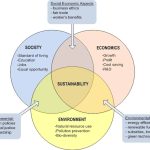Unlocking The Power Of Sustainable Living Geography: Take Action Today!
Sustainable Living Geography: Creating a Greener Future
Greetings, Readers! In our rapidly changing world, the concept of sustainable living geography has gained significant attention. This article aims to provide you with valuable insights into this fascinating topic. By understanding the principles and practices of sustainable living geography, we can work towards building a greener future for ourselves and the generations to come.
Introduction
Sustainable living geography encompasses the study and application of sustainable practices in different geographical contexts. It focuses on finding innovative ways to minimize our ecological footprint while promoting social and economic well-being. This interdisciplinary field combines elements of environmental science, urban planning, economics, and social justice to create a holistic approach towards sustainability.
1 Picture Gallery: Unlocking The Power Of Sustainable Living Geography: Take Action Today!

1.
What is Sustainable Living Geography?
Sustainable living geography involves understanding the interactions between human activities and the environment, with the aim of finding sustainable solutions to environmental challenges. It takes into account factors such as land use, resource management, and community development to create a harmonious balance between human needs and environmental preservation.
2.
Who is Involved in Sustainable Living Geography?

Image Source: mammothmemory.net
Various stakeholders play a crucial role in sustainable living geography. This includes researchers, policymakers, urban planners, architects, environmentalists, and community members. Collaboration among these diverse groups is essential to develop and implement sustainable practices effectively.
3.
When did Sustainable Living Geography Gain Prominence?
The concept of sustainable living geography has been evolving over several decades. However, it gained significant prominence in the late 20th century as concerns about environmental degradation and climate change intensified. Since then, sustainable living geography has become a key focus area in academia, policy discussions, and grassroots movements worldwide.
4.
Where is Sustainable Living Geography Applied?
Sustainable living geography can be applied to various geographical contexts, from urban areas to rural communities. It recognizes that different regions have distinct environmental, social, and economic characteristics, and therefore, solutions need to be tailored to specific contexts. Examples of sustainable living geography initiatives can be found in eco-cities, green buildings, sustainable agriculture, and renewable energy projects.
5.
Why is Sustainable Living Geography Important?
Sustainable living geography is crucial because it offers a pathway to mitigate the negative impacts of human activities on the environment. By adopting sustainable practices, we can reduce greenhouse gas emissions, preserve biodiversity, protect natural resources, and create more resilient communities. It also promotes social equity by ensuring that the benefits of sustainable development are accessible to all.
6.
How Can We Implement Sustainable Living Geography?
Implementing sustainable living geography requires a multi-faceted approach. It involves integrating sustainable practices into urban planning, designing energy-efficient buildings, promoting public transportation, adopting renewable energy sources, and fostering community engagement. Education and awareness also play a vital role in driving behavioral change towards more sustainable lifestyles.
Advantages and Disadvantages of Sustainable Living Geography
1.
Advantages of Sustainable Living Geography
Embracing sustainable living geography offers numerous benefits. It helps combat climate change, reduce pollution, conserve natural resources, and protect biodiversity. Sustainable practices also promote social cohesion, create green jobs, enhance public health, and foster a sense of community ownership and resilience.
2.
Disadvantages of Sustainable Living Geography
While the advantages of sustainable living geography are significant, some challenges and limitations need to be acknowledged. Implementing sustainable practices often requires upfront investments, which might be financially burdensome for some communities or individuals. Additionally, transitioning to sustainable solutions may require changes in lifestyles and behaviors, which can be met with resistance or cultural barriers.
Frequently Asked Questions (FAQs)
1.
Is sustainable living geography only applicable to urban areas?
No, sustainable living geography can be applied to various geographical contexts, including urban, suburban, and rural areas. The principles and practices of sustainable living geography are adaptable and can be tailored to specific environments and community needs.
2.
Can sustainable living geography promote economic growth?
Yes, sustainable living geography can contribute to economic growth by creating new job opportunities in green sectors and fostering innovation. Sustainable practices can also lead to cost savings in areas such as energy and resource management.
3.
What role does education play in sustainable living geography?
Education plays a crucial role in sustainable living geography as it raises awareness, promotes knowledge sharing, and empowers individuals and communities to make sustainable choices. Education can help bridge the gap between theory and practice, encouraging the adoption of sustainable behaviors.
4.
Are there any international initiatives promoting sustainable living geography?
Yes, several international initiatives promote sustainable living geography. The United Nations Sustainable Development Goals (SDGs) provide a framework for global action towards sustainability. Additionally, organizations such as the International Society for Sustainable Living Geography (ISSLG) facilitate collaboration and knowledge exchange among researchers and practitioners in the field.
5.
How can individuals contribute to sustainable living geography?
Individuals can contribute to sustainable living geography by adopting sustainable practices in their daily lives. This can include reducing energy consumption, conserving water, practicing responsible waste management, supporting local and sustainable businesses, and advocating for sustainable policies and initiatives.
Conclusion
In conclusion, sustainable living geography offers a comprehensive approach to address the pressing environmental and social challenges of our time. By embracing sustainable practices, we can create a more resilient and equitable future for ourselves and future generations. Let us all work together to build a greener and more sustainable world.
Disclaimer: The views and opinions expressed in this article are those of the author and do not necessarily reflect the official policy or position of any agency or organization.
This post topic: Idensr Lifestyles

